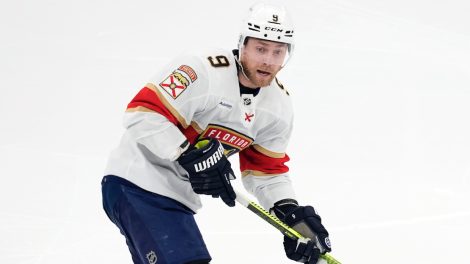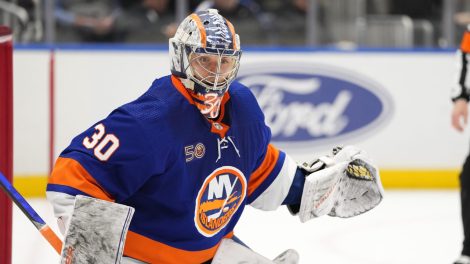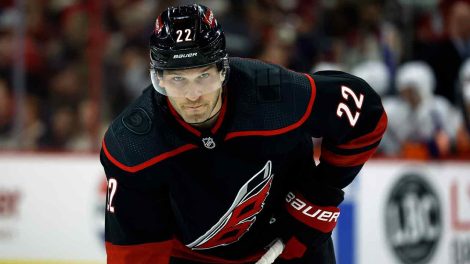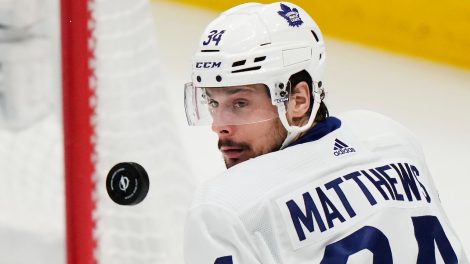It was never a secret that Canada was the team to beat at the 2016 World Cup of Hockey. What we didn’t know, however, was that Team North America would become the team to watch.
They were young, they were brash, and they were unbelievably fast.
“Give me that team for the next two years, and I’ll win a Stanley Cup with it,” said then-Detroit Red Wings Sr. V.P. Jimmy Devellano. “They would beat 20 NHL teams right now.”
It began as a two-headed gimmick, an under-23 team made up of Canadian and American players in one World Cup Pool, and Team Europe — a hodgepodge of Slovaks, Swiss, Germans and more — in the other. The latter squad made it to the tournament final, and the former would become the most talked-about gimmick since three-on-three overtime.
“We went in with the mindset of lettin’ them run,” said North America assistant coach Dave Tippett. “We thought the spontaneity of our team, that youthful exuberance, was going to be one of our strengths. So, we didn’t tap the brakes much. We wanted them to go, go go.”
“We wanted to turn them loose,” agreed head coach Todd McLellan, “but at some point we had to convince them we would have to defend. Therein was the trick for this group. How do we defend?”
[snippet]
That was a question asked early on, then forgotten about as the tournament played out.
General managers Stan Bowman and Peter Chiarelli had petitioned the NHL to be allowed one goaltender who was over 23 years of age. They were denied, settling for Matt Murray, John Gibson and Connor Hellebuyck. As McLellan put his lines together, Chiarelli lamented the fact the team didn’t have a centreman with a lifetime winning percentage of 50 per cent. And he was skeptical that his team would kill penalties very well.
“Faceoffs? Who was going to kill penalties? Stuff like that, we didn’t worry about. We were just playin’ our game,” said Connor McDavid, speaking from his parents’ home during the NHL’s pause. He listed teammates like Brandon Saad, Sean Couturier, Ryan Nugent-Hopkins, J.T. Miller and Vincent Trochek as guys who could give the team a defensive presence. “We got on the ice the first day, doing drills, and it was probably the fastest-paced practice I’ve ever been a part of. We knew we had talent. It was going to be a little raw, but we had those guys who had been around for a while. We trusted in them.”
Among the group that would be known by the cliché of “Young Guns” was Auston Matthews, who would play his first-ever professional game at the Toronto Maple Leafs home arena clad not in blue and white, but in the grey, black and orange of Team North America. Matthews started out as the team’s 13th forward and by the time the tournament began, he and Mark Scheifele were McDavid’s wingers, a line that would be the premier unit in the NHL today.
“I’d played a half (an injury shortened) season, and I couldn’t believe I was on the bench with these guys. I was still a little bit star-struck,” McDavid said. “For [Matthews], the first night we played Team Finland with all those veterans. Then we’re playing Russia, who is absolutely stacked. It must have been pretty eye-opening, but also a pretty cool experience. He had a pretty good tournament, and the fans loved him right away.”
In a pre-tournament game at the Bell Centre, the kids scored five goals on Team Europe in the opening 16 minutes, then hung on for a 7-4 win, in classic ‘80s Oilers fashion. They opened the tournament with a 4-1 win over Finland, outshooting them 43-25 and leaving Finnish head coach Lauri Marjamaki shell-shocked.
“They got better, they won every battle, they skate hard, they are so aggressive. Such a great team!” Marjamaki said. “The second period was a cold shower for us.”
In that game, Johnny Gaudreau turned Pekka Rinne’s crease into a skateboard park, scoring on a leaping, twisting deflection that caromed through his own legs and past Rinne. The hockey world had really never seen anyone try things like this, let alone succeed.
[snippet ID=3322139]
Meanwhile, as their confidence grew, the bonds between the players did as well.
“We thought there might be a US-Canada divide,” McLellan said. “There wasn’t.”
“We’re all young guys,” McDavid remembered. “We had lots of fun in Montreal and Quebec City, and we became a close-knit group in a short time. We beat Team Europe pretty good twice (in pre-tournament games), so we’re like, ‘Well, we’re not going to be too bad here.’ We beat a real good Finnish team, then we got Russia. We were confident, and we believed in each other, but you’re looking at their lineup going, ‘This is going to be a good test.’”
They lost 4-3 to Russia but outshot them 46-25. Sergei Bobrovsky was fantastic. Then North America played Sweden, in what history records as “The Game” of the 2016 World Cup of Hockey.
Just 20 seconds after puck drop, McDavid burst through the veteran pairing of Victor Hedman and Anton Stralman but was thwarted by Henrik Lundqvist. Matthews grabbed the rebound, stickhandled around Hedman while still on his knees, and as the fans oohed and aahed, he potted a rebound for a game-opening goal at the 30-second mark.
What were the Swedes saying to each other on the bench, as the kids buzzed their zone for the first few minutes?
“Wake the *$#@ up!” said defenceman Erik Karlsson. “Those first two minutes there was probably the most embarrassing that I’ve ever been a part of on a team.”
The game would end in as spectacular a fashion, with the teams trading breakaways during three-on-three overtime, Nathan MacKinnon scoring the winner with a spectacular display of skill.
Said McLellan that night, “I was standing on the bench, (yelling), “No! No! No!’ And then, ‘Go! Go! Go!’ It was just going back and forth, the energy in the building and the passion with the fans, the players…”
Today, the memory has not dulled at all.
“So exciting, so emotional,” McLellan said from California this week. “The fans were standing, the team, the media, the whole hockey world was so excited about these young guys doing their thing. It was a great moment. It was one of those moments that will be locked in forever.”
Alas, the kids needed a regulation win to advance to the semifinals, a fact the coaching staff had told them about but some players simply did not remember. “I think that was some of the youthful enthusiasm coming out,” chuckled Tippett.
[snippet id=4167285]
For McDavid, it only further whetted his appetite for international play — whether it be another World Cup, and Olympics, a Canada Cup…
“Anything. Anything honestly,” he said. “When you get the world’s best going head to head it makes for the best hockey, the best sports. The Olympics shows that every time. We need to find a way to get back there. I’m not sure how it happens. It just needs to happen.”
From his spot behind the Los Angeles Kings’ bench, McLellan has watched that North American roster mature.
“Looking back on Team North America, they’re in charge of the National Hockey League now,” he said. “They are the stars, and doing things in the regular season now on a regular basis that I thought we began to see at that tournament.
“Good for them to have the courage to keep doing it and accept the torch from the group above them.”
[relatedlinks]









